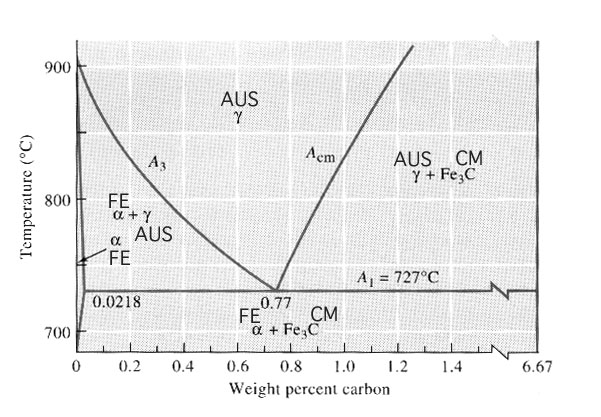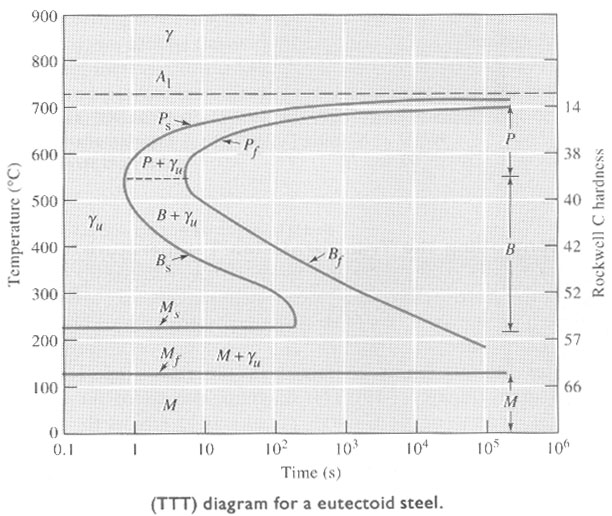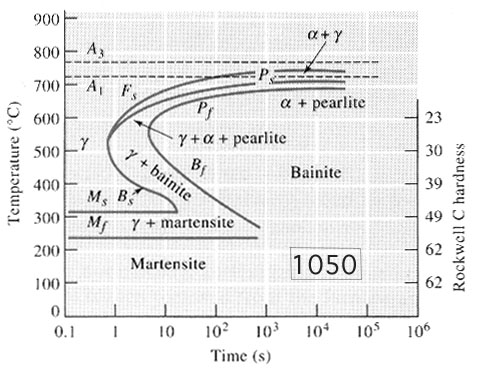
Suggested problems 2
1. For an Fe-0.35C alloy, determine:
the temperature at which AUS first begins to transform on cooling
Go up from 0.35 C to A3, then over to T axis. Looks like about 795 degrees C
the primary microconstituent that forms
Phase field below A3 is FE + AUS. Therefore FE forms; must be proeutectoid since no P yet formed.
the temperature at which P forms
Always the same...here, 727 degrees C. In class, we have used 723. (Essentially the same.)

2. Estimate the C content of a steel that contains 18% P and 82% primary FE.
Very roughly, 0.18 x 0.77 = 0.14 % C
Is the steel hypoeutectoid or hypereutectoid?
hypoeutectoid
3. Determine the required transformation temperature for a eutectoid steel to attain the hardnesses:
RC 38 600 deg C
RC 42 400 deg C
RC 52 300 deg C

B = bainite, a pearlite-like constituent
4. Estimate the hardness of a eutectoid steel that has been heated to 800°C for 1 hr, quenched to 650°C and held for 800 sec, and then quenched to room temperature. Describe the microstructure.
Roughly RC 30. 800 sec at 650 deg C is suffient to complete the transformation to P. Quenching only cools it quickly; nothing happens otherwise during quench.
5. Describe the microstructure present in a 1050 steel after following heat treatments.
heat at 820°C, quench to 650°C, hold for 90 sec, quench to RT
proeutectoid FE and P
heat at 820°C and quench to RT
MAR
heat at 820°C, quench to 450°C, hold for 90 sec, quench to RT
Bainite (P-like constituent)

6. Fine P and a small amount of MAR are found in a quenched 1080 steel. What constituents are present in a 1020 and a 4340 steel, similarly quenched?
1020: hardenability much less than 1080, so probably mostly or all P.
4340: hardenability greater than 1080, so probably all MAR.